Dive into the world of refreshing, delightful lettuce! There are many types of this leafy green vegetable, each offering a unique flavor profile and a variety of uses. From the soft, mild-flavored butter lettuce to the sturdy, crunchy romaine, there’s a type of lettuce that will perfectly suit your preferences.
This article will take you through the most popular types of lettuce, outlining their distinct tastes and suggesting the best uses for each. Prepare to explore the richness of lettuce and see how it can add vibrant colors, a satisfying crunch, and a healthful twist to your dishes!
1. Speckled Lettuce
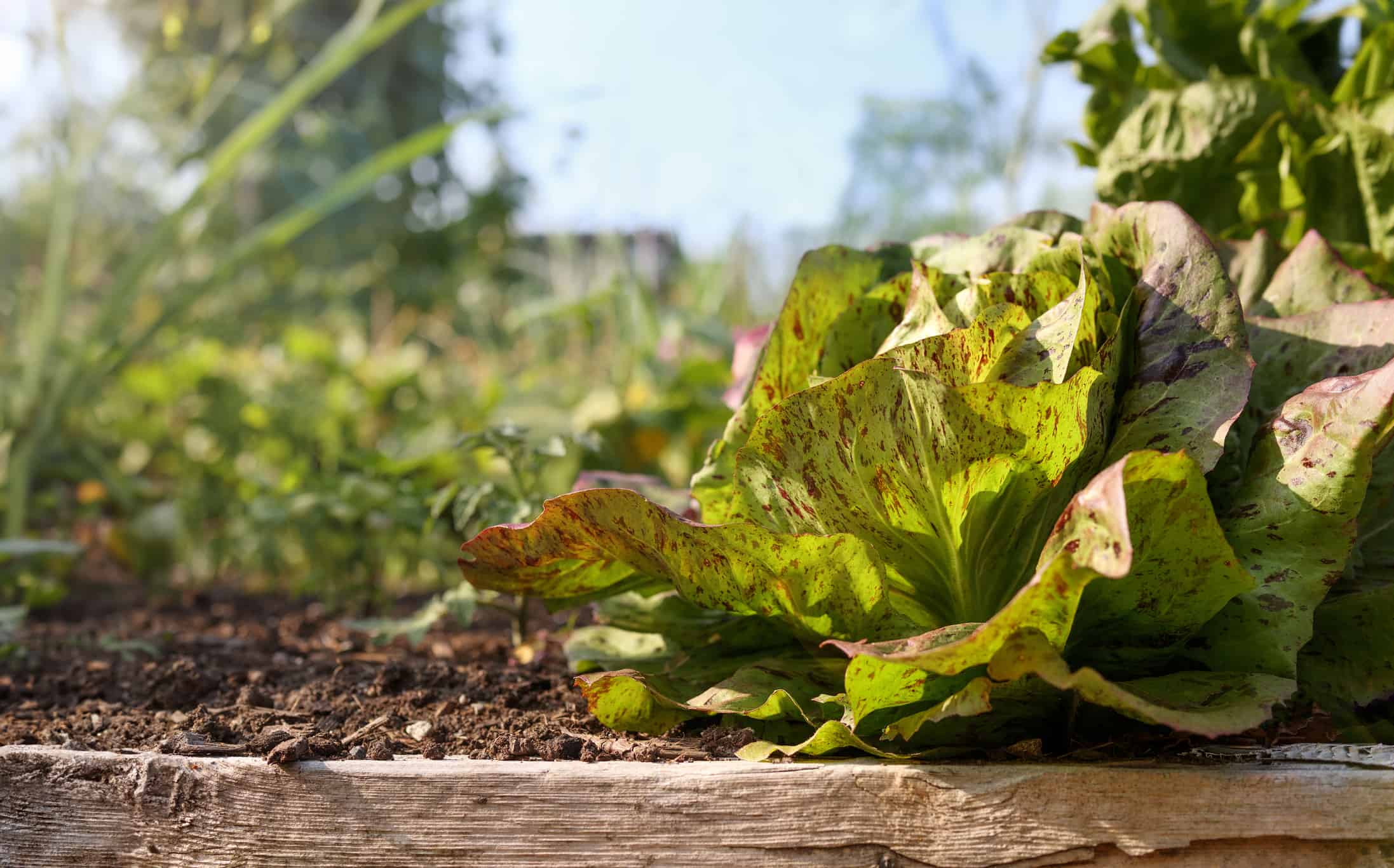
A Dutch heirloom speckled lettuce is best for raw consumption.
©Petra Richli/iStock via Getty Images
Speckled lettuce, a Dutch heirloom hailing from as far back as 1660, is a mix of green butterhead and the German Forellenschluss or trout back romaine. Its striking burgundy-speckled, apple-green leaves, arranged in large rosettes, add a touch of beauty to any garden.
Its flavor profile is somewhat peppery and earthy, slightly similar to watercress lettuce, making it ideal for raw consumption. It’s most commonly featured in salads but also lends itself well to sandwiches, pasta, spring rolls, burgers, and wraps or as a garnish for cooked meats.
2. Oak Leaf Lettuce
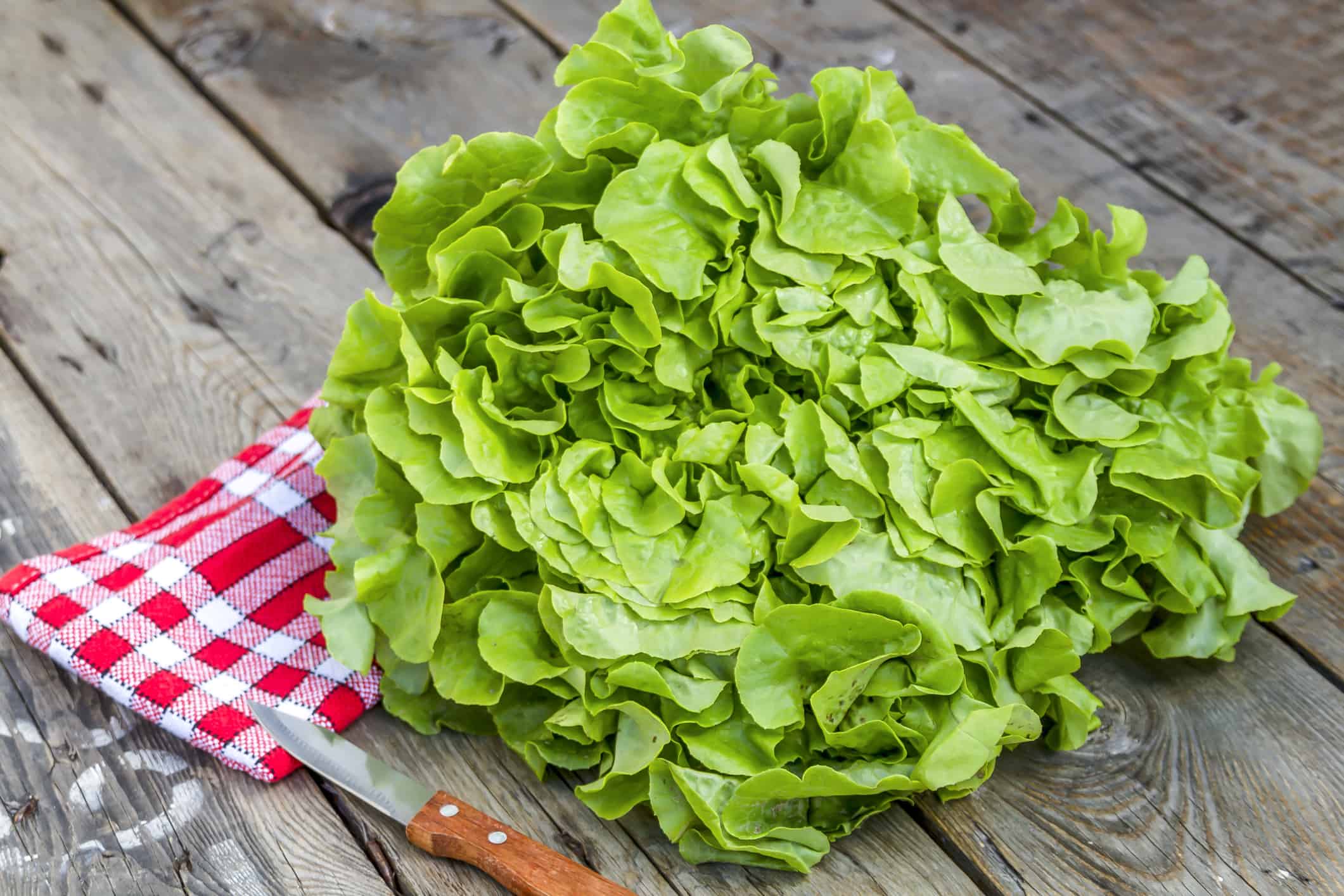
Known for its unique lobed leaves, oak leaf lettuce is either green or red in color.
©frederique wacquier/iStock via Getty Images
Oak leaf lettuce, known for its unique lobed leaves mirroring an oak tree, was introduced to the US in the 1800s. It showcases vibrant green or rich burgundy color, depending on its type.
Featuring a sweet, mellow taste devoid of the usual bitterness found in other lettuce varieties, it’s a favorite base for salads and bowls. This butter lettuce variant offers a tender texture and mild, slightly nutty flavor, enhancing its appeal as a refreshing salad component.
3. Lamb’s Lettuce
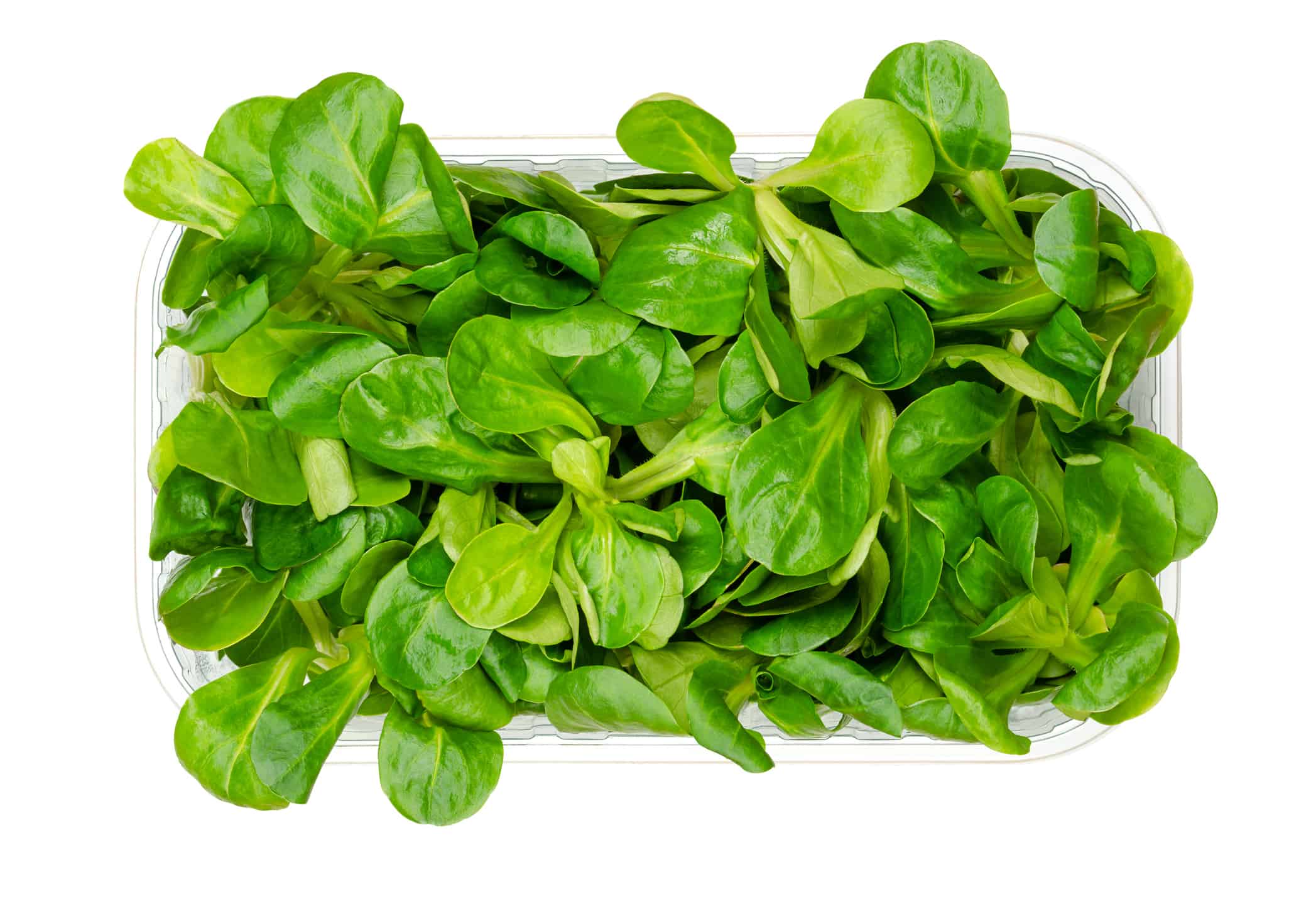
Lamb’s lettuce, also known as corn salad, has a tangy, nutty flavor that lends itself well in both raw and cooked applications.
©PeterHermesFurian/iStock via Getty Images
Originating from Europe, North Africa, and Western Asia’s temperate regions, lamb’s lettuce has been a wild-growing plant since ancient times. It’s distinguished by its clustered rosettes of 6 to 8 spoon-shaped or slightly pointed leaves, depending on the type.
Young and fresh, lamb’s lettuce offers a tangy, somewhat nutty flavor. Also referred to as corn salad, its long dark leaves and distinct taste find use in raw salads or as a steamed vegetable. Its unique name derives from the leaves resembling a lamb’s tongue in size and shape.
4. Batavia Lettuce
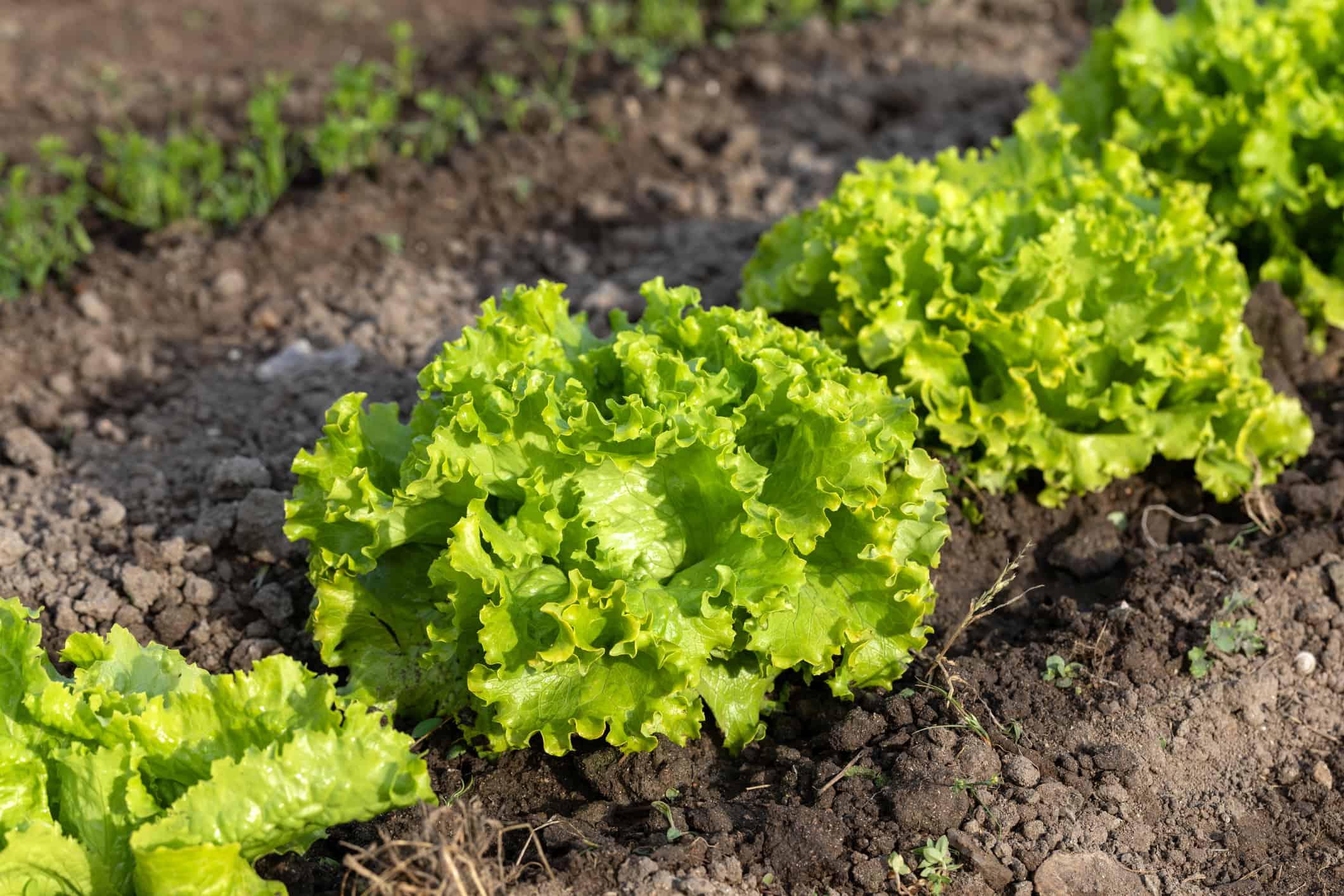
Batavia lettuce is one of the most popular lettuce types, thanks to its sweetness and lack of bitterness.
©Thomas Pajot/iStock via Getty Images
Originating from France, Batavia lettuce is characterized by its crinkled leaves and wavy edges. It’s available in vibrant green and red-brown varieties and is the original form of the widely known iceberg lettuce.
Batavia lettuce boasts a remarkable sweetness, lacking the bitterness found in some other lettuce types. It also has a notably crunchy texture, reminiscent of its iceberg lettuce descendant. Its sweetness and crispness make it ideal for salads and wraps, and its larger leaves work well in sandwiches, burgers, and meat wraps.
5. Little Gem Lettuce
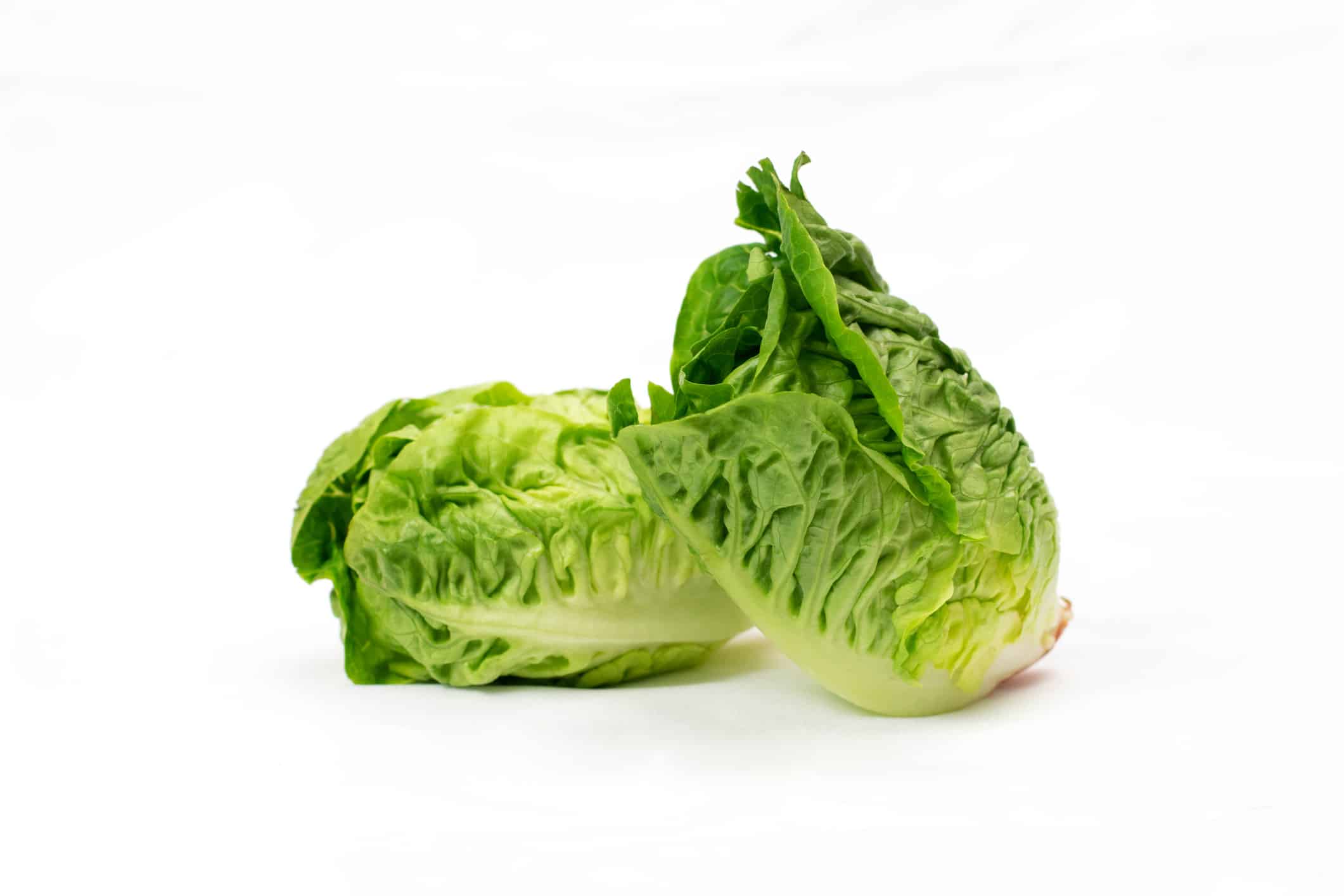
Little gem lettuce resembles a tiny romaine and is great for grilling.
©Mihail Croitoru/iStock via Getty Images
Believed to be native to France, little gem lettuce resembles a mini version of romaine. Despite its full growth, this specialty romaine variety stands out with its luscious, vibrant green leaves, about five inches long and three inches wide.
This lettuce variety features a pale green heart and a crisp, sweet-tasting center that doesn’t develop the bitterness typical of common lettuce types. Its robust, tightly packed leaves make little gem perfect for unconventional uses like grilling, as they don’t wilt quickly. Additionally, it’s an ideal choice for salads.
6. Boston Lettuce

With a tender and crispy texture, the Boston lettuce almost resembles a rose in shape.
©KrimKate/iStock via Getty Images
Boston lettuce, first recorded in 1855, possibly came to America via European immigrants, though its exact origin remains unknown. Resembling a rose with its round shape, medium to large size, and loosely arranged, wavy, cup-shaped leaves, it presents an appealing aesthetic.
Boasting a tender, crisp texture and a mild, sweet, slightly nutty flavor, Boston lettuce is primarily grown for raw consumption. Its versatility lends itself to various dishes, such as salads, sandwiches, and wraps, or simply enjoyed on its own, adorned with dressing and toppings.
7. Butter Lettuce
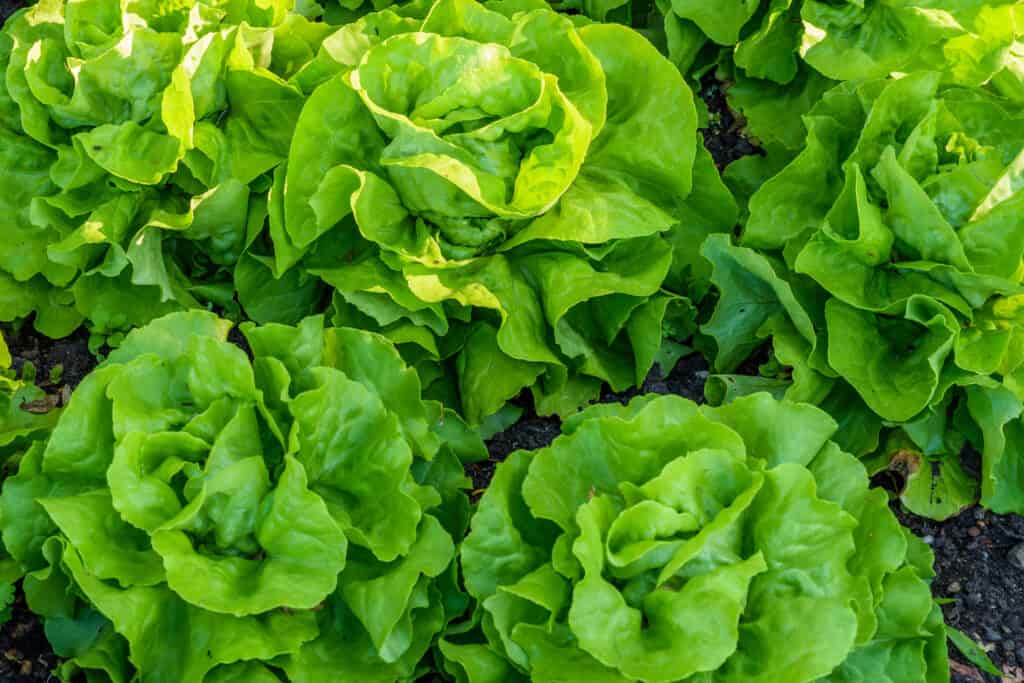
Butterhead lettuce has loose, round heads with sweet, tender leaves.
©iStock.com/Conny Pokorny
Believed to have its roots in the Mediterranean, butterhead lettuce spread across Europe by the late 16th century. It’s characterized by loose, round heads of soft, sweet leaves with a gentle flavor. Each variant of butterhead lettuce features smooth, loosely coiled leaves, often sold with roots intact for optimal freshness.
This lettuce’s sweet, tender leaves make perfect, easy salad greens but can also serve as an edible container for low-carb dishes.
8. Coral Lettuce
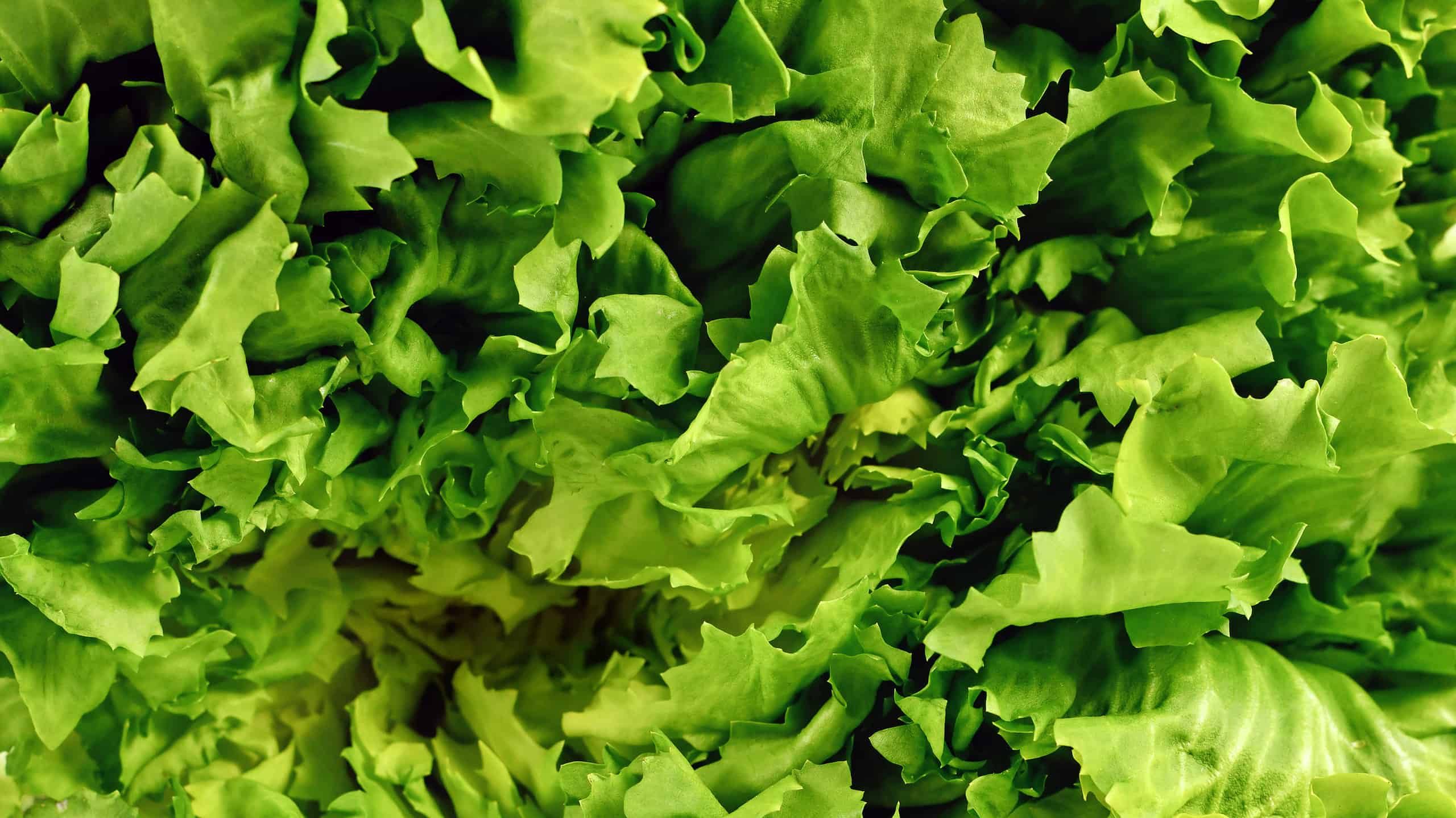
Coral lettuce has frilly leaves and perfect for a wrap or salad.
©Firn/iStock via Getty Images
Known for its frilly leaves, coral lettuce comes in both green and red variants, featuring tightly curled leaves reminiscent of coral. It offers a mild taste with a hint of bitterness and has a texture adept at retaining dressings.
A fun use for this lettuce is as a wrap for chicken or ham salads, creating a delectable parcel. Alternatively, combine coral lettuce with roasted pumpkin, pine nuts, and feta for a delightful salad.
9. Looseleaf Lettuce
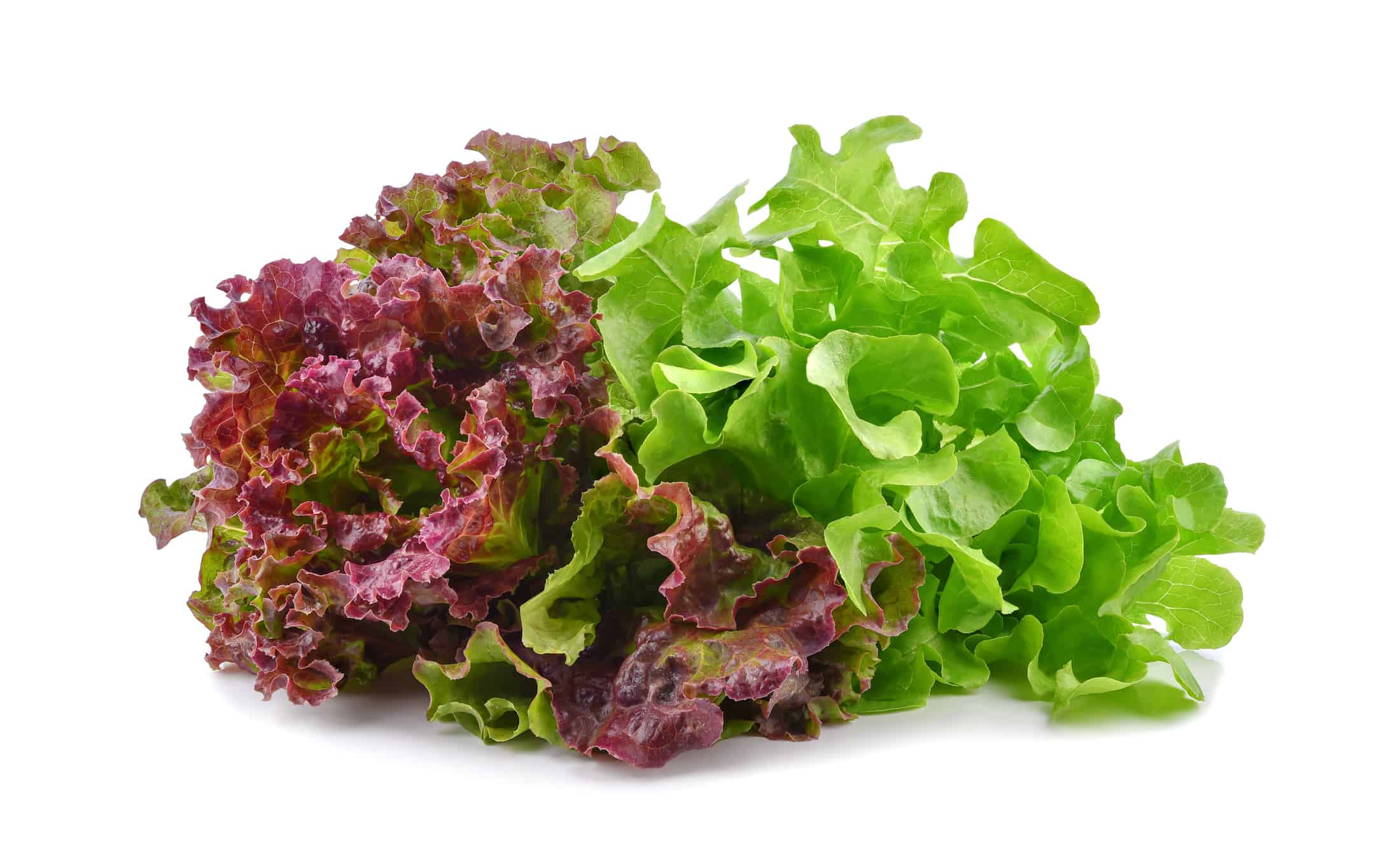
Before eating your looseleaf lettuce, make sure it is properly washed and dried!
©PotaeRin/iStock via Getty Images
Looseleaf lettuce, with its green or red leaves, is known for its open heads, ruffled tops, and crunchy stems. It’s a popular choice for home gardens and boasts multiple varieties, usually offering a sweet, mild flavor.
Before enjoying your looseleaf lettuce, ensure it’s well-washed and dried. Apply dressing just before serving to avoid any wilt. It’s typically consumed raw, making it a great addition to salads and sandwiches.
10. Frisée Lettuce

Frisee has pale-green curly leaves and is often used in salads and as a garnish.
©kolesnikovserg/iStock via Getty Images
Native to ancient Egypt, frisée has been grown in Europe since the 18th century. It’s often part of gourmet salad blends, combined with other flavorful greens like arugula, chervil, and radicchio. The heart of the plant is yellow, surrounded by green outer leaves.
Frisée, recognized by its pale-green, curly leaves, adds texture and visual appeal to salads with its crisp, slightly bitter, and peppery flavor. It’s frequently used in upscale restaurant dishes, either in salads or as an attractive garnish. Its slight bitterness pairs well with sweet salad ingredients or dressings.
11. Romaine Lettuce
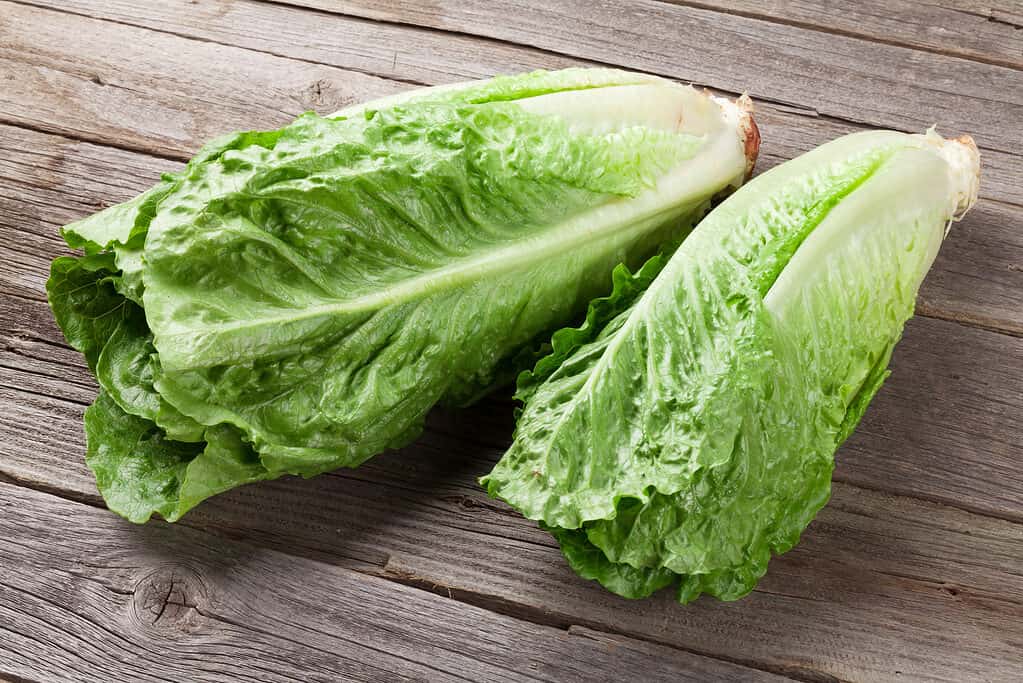
Originating from the Mediterranean and the Middle East, romaine lettuce is refreshing and juicy.
©iStock.com/karandaev
Romaine lettuce originates from the Mediterranean and the Middle East and has been cultivated since ancient times. This lettuce boasts long, erect, crunchy leaves with a prominent midrib extending almost to the leaf’s blunt tip. Its leaves, somewhat cup-like, assemble into loose heads. The inner leaves tend to be softer and lighter in color than the outer ones.
The flavor of romaine lettuce is refreshing and juicy, with a slight bitterness and a crunch. It’s mostly consumed raw but can be cooked too. Romaine is excellent in salads, sandwiches, as a taco garnish, or even grilled!
12. Iceberg Lettuce
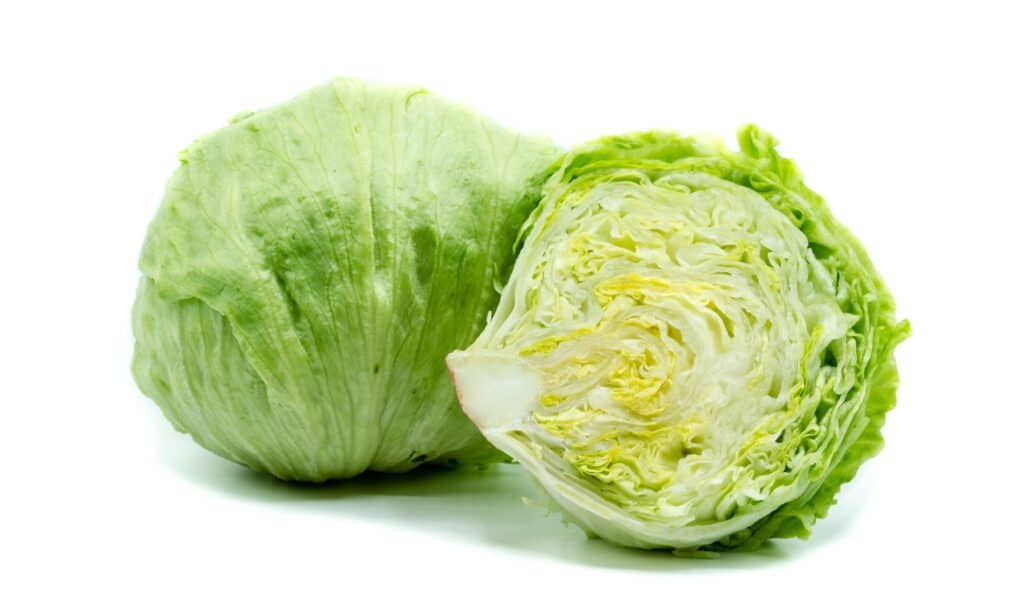
Of course, one of the most popular lettuce types is iceberg lettuce.
©iStock.com/Animaflora
The most favored and popular type of lettuce in America, iceberg lettuce is notably sensitive to heat. It was first cultivated in 1894 by Burpee Seeds and Plants for northern US climates. Its name derives from its original transportation method in crushed ice, appearing like miniature icebergs.
Compared to many other greens, such as spinach or kale, iceberg offers a sweeter, significantly crunchier taste. This unique texture makes it a preferred choice for salads, including those eaten as leftovers. Its mildly flavored, firm, crunchy nature makes it an excellent addition to sandwiches and salads, contributing a delightful crispiness.
13. Stem Lettuce
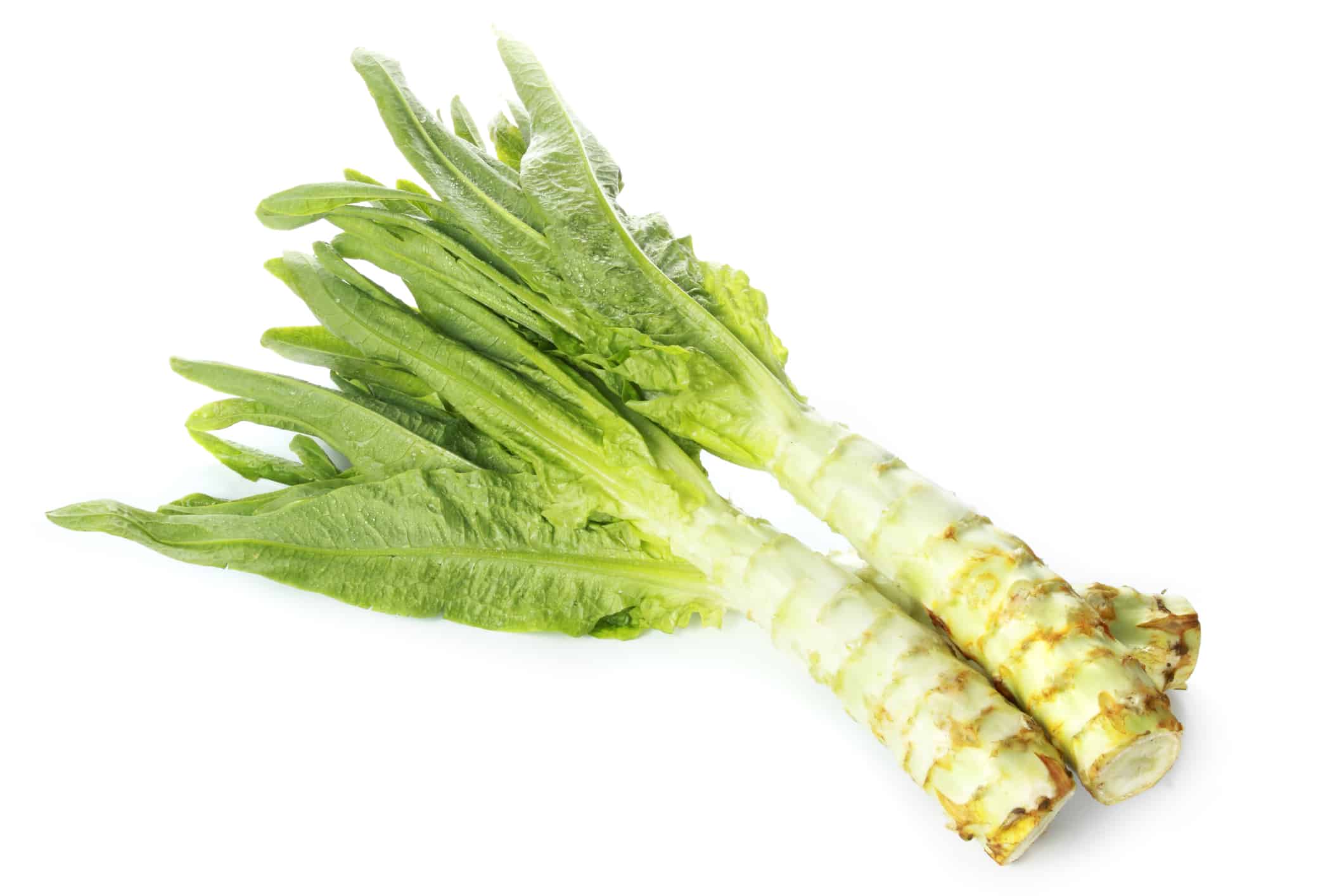
Also known as celtuce or Chinese lettuce, stem lettuce is a great ingredient in stir-fries, salads, and pickles.
©chengyuzheng/iStock via Getty Images
Stem lettuce was first documented in China around the 5th century. As other regions focused on leaf production, the Chinese worked on cultivating a robust, crunchy stem for cooking. Known alternatively as celtuce or Chinese lettuce, this type boasts an edible stem with a delightful nutty taste.
This leafy green, highly valued in China, adds a unique flavor to stir-fries, salads, and pickles and proves to be a versatile ingredient in numerous dishes.
14. Endive Lettuce
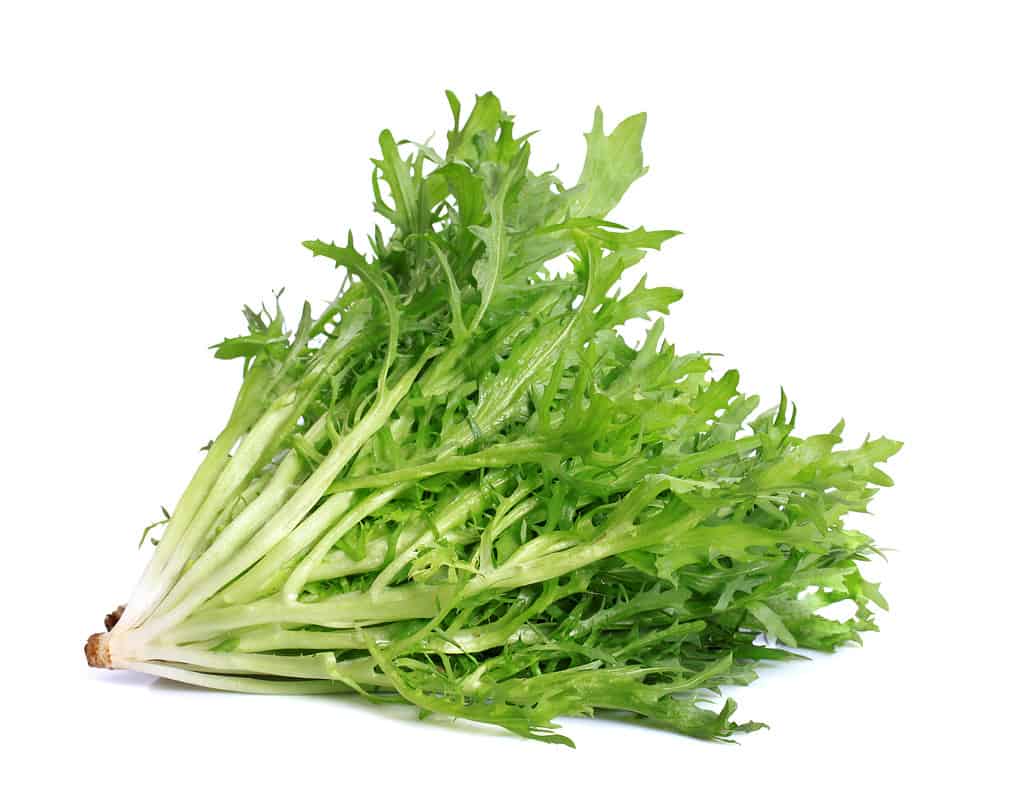
With a mildly bitter taste, endive lettuce can be enjoyed cooked or raw.
©jiangjunyan/iStock via Getty Images
Endive lettuce is either from Southern Asia or possibly the Mediterranean. It is a leafy green vegetable that offers a mild bitterness to the palate.
Endive can be relished in its raw form or cooked, providing versatility in its use. The raw leaves are crunchy and subtly bitter, making a fantastic addition to salads. On the other hand, when cooked, endive’s prominent flavor mellows down, revealing a pleasantly nutty and sweet undertone.
15. Watercress Lettuce
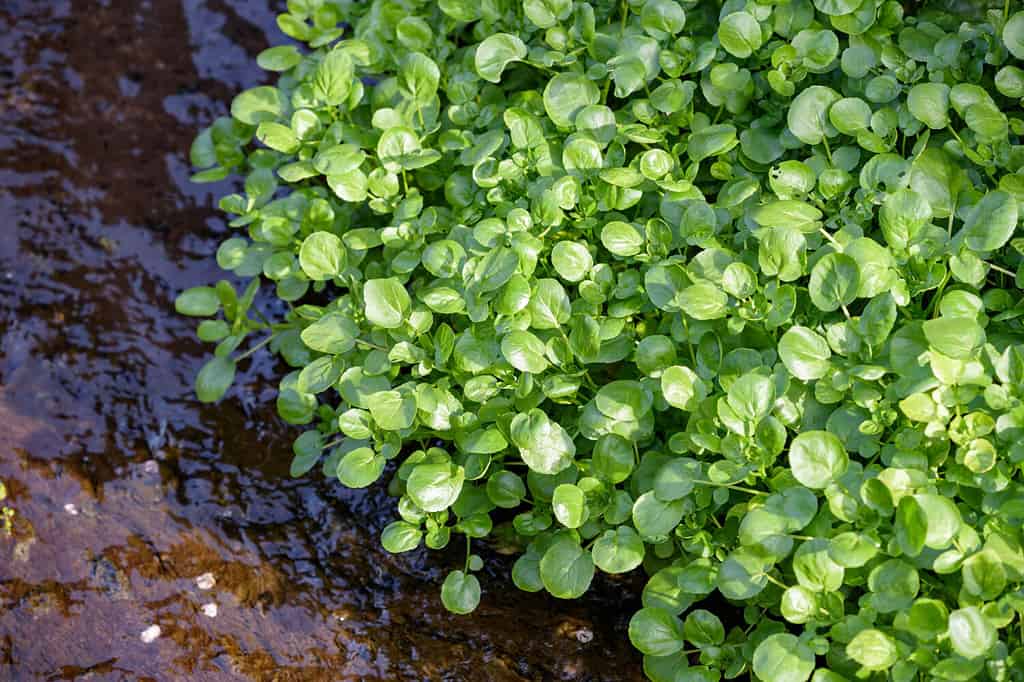
Although you can eat it raw, you can also cook watercress.
©Picmin/Shutterstock.com
From Ancient Greece, watercress, a leafy green belonging to the cabbage and mustard family, adds a tangy, slightly bitter, and peppery zest to dishes. This versatile vegetable is extensively used in cooking and can be consumed raw.
Apart from eating it raw, watercress can also be cooked like other leafy greens. You can simply wilt it or incorporate it into curries, soups, and stews for a flavorful twist.
16. Red Leaf Lettuce

An elongated vegetable, the red leaf lettuce has a crunch.
©Niteenrk/iStock via Getty Images
Red leaf lettuce, domesticated from wild weeds, has a history dating back about 4,500 years in Egypt. The plant is elongated, narrow at the base, and it expands into a loose, curly top.
Its crunch is unmistakable, and when the stem is scratched, it emits a sweet or slightly bitter scent. The taste of the leaves is subtly earthy, leaning between mild sweetness to semi-bitter, with a hint of hazelnut. This lettuce variety lends its unique flavor to salads, wraps, sandwiches, and as a garnish in meat dishes.
17. Little Caesar Lettuce
The little Caesar lettuce is a striking, tall romaine variety featuring vibrant green outer leaves and inner leaves of a golden hue.
With its delightful crunch and sweet taste, it’s a wonderful addition to any sandwich or salad. Being easy to cultivate, it’s a favorite for small gardens and is known for abundant yields. Its golden, tender, and crispy leaves are ideal for making a classic Caesar salad.
18. Red Mizuna Lettuce

Red mizuna is a red variety of the traditional green mizuna.
©Elena Zakharova/iStock via Getty Images
Born from the efforts of the Tokita Seed Company in Japan, red mizuna was created as a colorful variant of the traditional green mizuna. The small to medium-sized leaves of red mizuna form clusters around a central stalk, creating a bushy display with elongated stems. These stems, ranging from light green to magenta, provide a sturdy crunch.
With a flavor that is peppery and slightly bitter, red mizuna shines in both raw and cooked dishes such as stir-fries, sautés, or soups. Its young leaves blend well with other greens like spinach, arugula, chard, oak leaf, romaine, and frisée, often found in spring or mesclun mixes.
19. Bronze Mignonette Lettuce
Bronze mignonette lettuce, first appearing in the 1800s, thrives in warmer climates due to its impressive heat tolerance. But interestingly, it is also very cold-hardy.
Reaching about 8 inches in width when fully grown, this lettuce is cherished for its crisp bite and gentle, buttery taste. Not only does it add a healthful crunch to your meals, but it also enhances sandwiches and burgers with its substantial texture. The size of its leaves even allows for a low-carb substitute for traditional buns and wraps.
How to Grow Lettuce
Are you thinking about growing some lettuce in your garden? A versatile vegetable, lettuce is a fun vegetable to grow and is perfect for beginners. This cool-season crop grows best in the spring and fall months.
Ideally, sow the seeds around 2 to 4 weeks before your last spring frost date (or in the fall) and plant them around a quarter inch deep into well-fertilized soil. Depending on the type of lettuce you are planting, make sure there is adequate space in between each seed – generally anywhere between 4 to 16 inches. If you want a continuous harvest, sow lettuce every couple of weeks!
As a top tip: take advantage of companion planting by planting something like garlic or chives in between your lettuce. In doing so, you can better control aphid populations, as they protect your lettuce from harmful pests!
Once sowed, make sure to water the soil thoroughly and ensure the soil drains well. The soil should always remain moist but not too wet! The cool thing about growing lettuce is that it is quite easy to tell when it needs water – simply look at the leaves. If the leaves are wilting, cool the lettuce down with some water. To delay bolting, consider covering the plants with a shade cloth.
Summary of Popular Types of Lettuce
| Number | Lettuce | Taste Profile | Best Uses |
|---|---|---|---|
| 1 | Speckled Lettuce | Earthy and slightly peppery | Raw, salads, and sandwiches |
| 2 | Oak Leaf Lettuce | Sweet, nutty, and mellow | Sandwiches, wraps, and tacos |
| 3 | Lamb’s Lettuce | Slightly tangy and nutty | Raw in salads and steamed as a vegetable |
| 4 | Batavia Lettuce | Sweet | Garnishing, sandwiches, and burgers |
| 5 | Little Gem Lettuce | Sweet | Grilled with BBQ and salads |
| 6 | Boston Lettuce | Mild, sweet, and nutty | Salads, sandwiches, and raw |
| 7 | Butter Lettuce | Sweet with a mellow floral note | Low-carb meals and salads |
| 8 | Coral Lettuce | Slightly bitter and mild | Burgers, salad bowls, and sandwiches |
| 9 | Looseleaf Lettuce | Sweet and mild | Wraps and salads |
| 10 | Frisee Lettuce | Peppery and mildly bitter | Decorative accent or gourmet dishes with salads |
| 11 | Romaine Lettuce | Slightly bitter, juicy, & refreshing | Salads, sandwiches, and raw |
| 12 | Iceberg Lettuce | Mild and slightly sweet | Sandwiches and salads |
| 13 | Stem Lettuce | Nutty, mild, and smoky aftertaste | Stir-fried, soup, and pickles |
| 14 | Endive Lettuce | Bitter and crisp | Soups, stews, pasta, and salads |
| 15 | Watercress Lettuce | Peppery | Stews, coups, and curries |
| 16 | Red Leaf Lettuce | Semi bitter, mildly sweet & earthy | Garnishing, salads, and wraps |
| 17 | Little Caesar Lettuce | Crunchy and sweet | Salads and sandwiches |
| 18 | Red Mizuna Lettuce | Preppery and mildly bitter | Cooked and raw |
| 19 | Bronze Mignonette Lettuce | Smooth buttery flavor | Burgers, sandwiches, and salads |
Thank you for reading! Have some feedback for us? Contact the AZ Animals editorial team.







